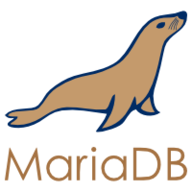
Maintainerr
Maintainerr makes managing your media easy. Create custom rules with parameters across different services, show matching media on the Plex home screen for a given amount of days and handle the deletion.
Browse our large and growing catalog of applications to run in your Unraid server.

Maintainerr makes managing your media easy. Create custom rules with parameters across different services, show matching media on the Plex home screen for a given amount of days and handle the deletion.
Downloaders, Media Applications• Music, Video, Media Servers• Music, Video, Other, Productivity, Tools / Utilities• Utilities
A TUI and CLI to help you manage your HTPC and -Arrs setup. This is a command-line tool, designed to be used in a terminal. It does not have a web interface. Enter the container console to use it: https://github.com/Dark-Alex-17/managarr?tab=readme-ov-file#the-managarr-cli

ManicTime Server receives data from ManicTime clients installed on your network and provides reports, which you can view with a web browser. After creating the container, stop the container and run this command in a shell (SSH Login or GUI Console) on your unraid server, to create the admin user. Change the directory if you have used a different path (/mnt/user/appdata/manictimeserver) and be sure to change the username and password!. docker run -v /mnt/user/appdata/manictimeserver:/app/Data -p 8080:8080 --rm --entrypoint dotnet manictime/manictimeserver ManicTimeServer.dll addadmin -u admin@unraidserver.com -p someSecretPassword After that, you can start the container as usual. https://hub.docker.com/r/manictime/manictimeserver/

Downloaders, Network Services• Web, Tools / Utilities• Utilities
Docker container which mirrors manjaro packages and serves them via nginx This image is based on the alpine image and uses rsync to synchronize the packages and nginx to deliver them. Manjaro has provided a list of Rsync-capable mirrors at https://wiki.manjaro.org/index.php/Manjaro_Mirrors, which synchronize from the official Manjaro server. It's best to choose the one closest to you. Region URI Asia / Japan rsync://ftp.tsukuba.wide.ad.jp/manjaro Europe / Germany rsync://ftp.halifax.rwth-aachen.de/manjaro/ Europe / Sweden rsync://ftp.lysator.liu.se/pub/manjaro/ Europe / Italy rsync://manjaro.mirror.garr.it/manjaro/ Europe / United Kingdom rsync://mirrorservice.org/repo.manjaro.org/repos/ RU / Russian Federation rsync://mirror.yandex.ru/mirrors/manjaro/

Manyfold is a Digital Asset Manager (DAM), specifically designed for 3D print files. Create a library pointing at your files on disk, and it will scan for models and parts. It assumes that any folders containing STL or OBJ files are models, and the files within them are parts. You can then view the files easily through your browser! This template does not require PostgreSQL or Redis to operate, as it uses a built-in sqlite database.

Media Applications• Other, Network Services• Other, Other, Tools / Utilities• Utilities
Mariadb(https://mariadb.org/) is one of the most popular database servers. Made by the original developers of MySQL.

Network Services• Other, Other, Tools / Utilities• Utilities
Official MariaDB database container. It allows to set a database and username without using the console. MariaDB is a community-developed, commercially supported fork of MySQL (RDBMS). Root Password: This container creates by default a random root password on initial execution. Open Docker > MariaDB Icon > Logs > Scroll down to "GENERATED ROOT PASSWORD" to find it. Creating database dumps docker exec MariaDB-Official sh -c 'exec mysqldump --all-databases -uroot -p"YOUR_ROOT_PASSWORD"' > /mnt/user/Backups/all-databases.sql Restoring data from dump files docker exec -i MariaDB-Official sh -c 'exec mysql -uroot -p"YOUR_ROOT_PASSWORD"' < /mnt/user/Backups/all-databases.sql

Matchering 2.0 is a novel Containerized Web Application and Python Library for audio matching and mastering. It follows a simple idea - you take TWO audio files and feed them into Matchering: TARGET (the track you want to master, you want it to sound like the reference) REFERENCE (another track, like some kind of "wet" popular song, you want your target to sound like it) Our algorithm matches both of these tracks and provides you the mastered TARGET track with the same RMS, FR, peak amplitude and stereo width as the REFERENCE track has.

Media Applications• Video, Media Servers• Video, Productivity, Tools / Utilities• Utilities
Materialious is a privacy respecting frontend for YouTube built ontop of Invidious.
Matomo is a free and open source web analytics application written by a team of international developers that runs on a PHP/MySQL webserver.

Matomo, formerly Piwik, is a free and open-source web analytics application developed by a team of international developers, that runs on a PHP/MySQL webserver. It tracks online visits to one or more websites and displays reports on these visits for analysis.
Network Services• Messenger, VOIP, Productivity, Tools / Utilities• Utilities
Run a sliding sync proxy. An implementation of MSC3575 for you Synapse Backend. Setup Process: Requires Postgres 13+. createdb syncv3 SYNCV3_SERVER Required. The destination homeserver to talk to (CS API HTTPS URL) e.g 'https://matrix-client.matrix.org' (Supports unix socket: /path/to/socket) SYNCV3_DB Required. The postgres connection string: https://www.postgresql.org/docs/current/libpq-connect.html#LIBPQ-CONNSTRING SYNCV3_SECRET Required. A secret to use to encrypt access tokens. Must remain the same for the lifetime of the database. SYNCV3_BINDADDR Default: 0.0.0.0:8008. The interface and port to listen on. (Supports unix socket: /path/to/socket) Create the secret with: openssl rand -hex 32 More Information: https://github.com/matrix-org/sliding-sync
Official Matter Server docker container from Home Assistant. This project implements a Matter Controller Server over WebSockets using the official Matter (formerly CHIP) SDK as a base and provides both a server and client implementation. The goal of this project is primary to have Matter support in Home Assistant but its universal approach makes it suitable to be used in other projects too. There is NO WEB-UI to this container. Check the container logs for any errors when necessary. REQUIREMENTS: Unraid needs to have IPV4+6 enabled on the network interface! Make sure your you run the container on the host network. The host network interface needs to be in the same network as the Android/iPhone device you are using for commissioning. Matter uses link-local multicast protocols which do not work accross different LANs or VLANs.
A plugin-based Matrix bot system written in Python.
A self-hosted personal finance and wealth management app.

Containerized mbpfan (for Macs running Linux, to control fans) NOTE: the executable in the container was compiled by bplein from https://github.com/linux-on-mac/mbpfan. Uses the Ubuntu repository version of https://github.com/linux-on-mac/mbpfan Need to create a configuration file with the following contents and mount it in the container as a volume in the container under /etc/mbpfan.conf: File contents of /mnt/user/appdata/mbpfan/mbpfan.conf (example on a Late 2012 i7 Mac mini) is available at: https://github.com/bplein/mbpfan/blob/master/etc/mbpfan.conf
Companion app for mdblist.com for Radarr and Sonarr integration
Media Reconciler, or simply mecon, is a cross-platform command line tool which reconciles media within a directory with media in a Plex library. For a given directory of files, it answers simple questions such as: Which ones have failed to have been added to a Plex library? Which ones exist in a Plex library? Which ones have been watched by all users? Which ones have been watched by a sub-set of users? For full documentation see https://github.com/elzik/mecon#mecon
A simple application to makes it easy to keep track of medication inventory and reorder on time by sending reminders.

Mobile friendly tool for downloading videos from social media. For direct downloads: http::/api?url=SOME_URL Written in Golang using youtube-dl and ffmpeg for conversion.
MediaInfo is a convenient unified display of the most relevant technical and tag data for video and audio files. The GUI of the application is accessed through a modern web browser (no installation or configuration needed on the client side) or via any VNC client. Also, being based on Alpine Linux, size of this container is very small. For a complete documentation of this container, see https://github.com/jlesage/docker-mediainfo#readme

Cloud, Network Services• Web, Productivity, Tools / Utilities• Utilities
MediaWiki with WYSIWYG VisualEditor extension and Parsoid service. Built with Alpine, S6-overlay, NGINX, PHP-FPM with PHP 7.3, NodeJS, along with other extensions.

Cloud, Network Services• Web, Productivity, Tools / Utilities• Utilities
Docker container for MediaWiki running on Alpine, S6-overlay, Nginx, PHP-FPM, MediaWiki Parsoid service, WYSIWYG VisualEditor extension, along with other extensions. A CLI menu to simplify managing extensions, backups, database updates, and service configurations, scripts that handle setup and Mediawiki upgrades, and optional MariaDB add-in.
An open-source, fast, and hyper-relevant search engine that fits effortlessly into your projects.
Home Automation, Media Applications• Other, Media Servers• Other, Other, Tools / Utilities• Utilities
Membarr is a discord bot that invites discord users to Plex and/or Jellyfin. Manually create users and invite server members with a single command, or let Membarr automatically add server members with a certain role.
Memcached is an in-memory key-value store for small chunks of arbitrary data (strings, objects) from results of database calls, API calls, or page rendering.

Media Applications• Other, Other, Tools / Utilities• Utilities
A simple web service that generates a meme image given text and an image URL. -URL parameters: image: URL of the image top: text to add at the top of the image bottom: text to add at the bottom of the image -Syntax: memegen.example/?top=Top Text&bottom=Bottom Text&image=http://url.of/your/image.jpg

A lightweight, self-hosted memo hub with knowledge management and socialization.
Media Applications• Video, Other, Productivity, Tools / Utilities• Utilities
Web GUI for youtube-dl (using the yt-dlp fork) with playlist support. Allows you to download videos from YouTube and dozens of other sites.

Microsoft Edge is a proprietary, cross-platform web browser created by Microsoft.